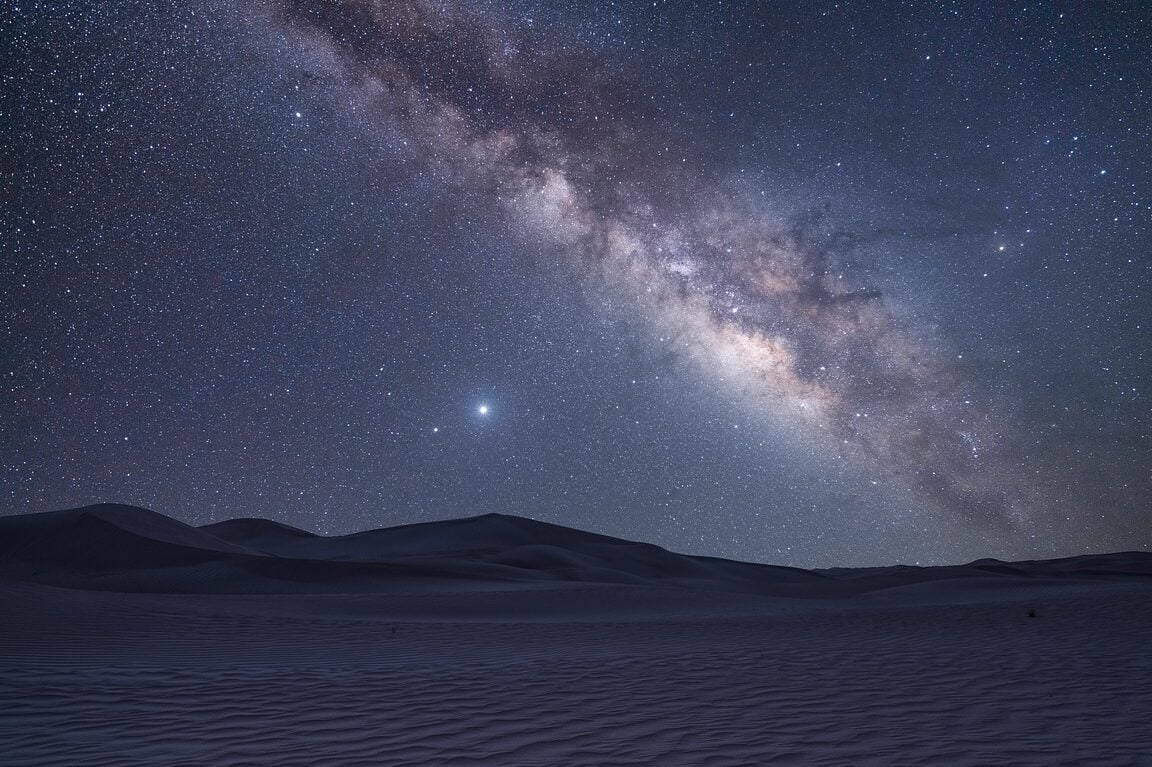Regrettably, the majority of individuals have lost touch with the awe-inspiring beauty of the Milky Way! Our lives are now centered in urban environments where the night sky is relentlessly brightened by the glow of streetlights, luminous advertisements, and passing vehicle headlights. Moreover, in metropolitan areas, the air is often filled with smog, which efficiently reflects the light emitted by these streetlights. Consequently, instead of a dark and clear sky, the urban night sky appears hazy and illuminated, resembling the coloration of a cup of coffee mixed with milk. Thus, it is no surprise that many individuals have never had the privilege of witnessing the mesmerizing spectacle of the Milky Way. This brings forth the inquiry: is it even feasible to behold its splendor? More precisely, how can one catch a glimpse of the resplendent Milky Way in the celestial expanse?
The straightforward response to this inquiry is: search for the night sky! However, it is becoming increasingly difficult to do so nowadays compared to 20-30 years ago. There are fewer and fewer locations on Earth that remain untouched by artificial lighting. Yet, it is precisely a dark and clear sky that is necessary to fully appreciate the beauty of the Milky Way. So, where can it be found? Before we delve into that question, let’s first explore the optimal time for observing the Milky Way.
Optimal Conditions for Observing the Milky Way
Spotting the Milky Way in the night sky is not always an easy task. During the spring season, particularly in April, the Milky Way tends to remain low in the northern region of the sky, creating a subtle arc as it peeks out from behind the horizon. This is due to the fact that the Earth’s night side is facing away from the Milky Way during this time, resulting in a sky that is exceptionally dark and devoid of stars.
In winter, the Milky Way traverses through prominent constellations such as Ascendant, Taurus, Orion, and the Lesser Dog. However, even during this period, its visibility is somewhat limited. This can be attributed to the fact that in winter, our line of sight is directed towards the outer regions of the Galaxy, where the Milky Way appears faint and lacks distinct shape.
So, when is the ideal time to catch a glimpse of the Milky Way?
The best time to observe the Milky Way in Russia is during the months of August and September. During this period, we have the opportunity to admire its most luminous sections in the direction of the Swan, Shield, and Sagittarius constellations. The Milky Way can also be fairly well observed in the first half of summer, although during this time, there are short and bright nights throughout most of Russia.
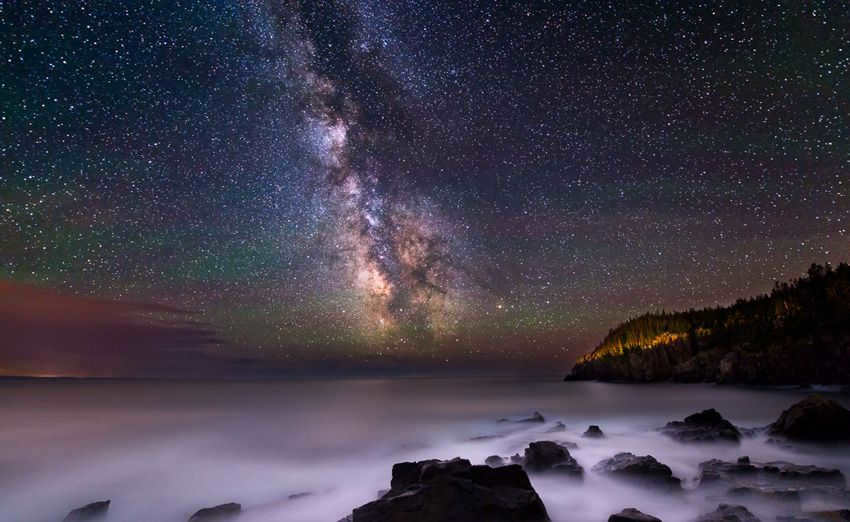

The Milky Way is visible in the direction of the constellations Shield and Sagittarius. This photo was captured in Canada in August 2013 by Adam Woodworth.
How can you spot the Milky Way in the sky?
Now let’s discuss how you can observe the Milky Way using just your eyes. Here are a few steps that will guide you:
- First and foremost: Find a location far from urban light pollution! As you may already know, large cities emit a glow that spreads for miles. Try to find a spot where this glow is no longer visible or minimal.
- It is important to choose an observation site that is away from roads with car traffic to avoid being blinded by headlights.
- Make sure to observe on a night without a moon! The moon can have the same negative impact on visibility as streetlights. So, look for the Milky Way when: a) the moon is near the new moon phase; b) the moon has not yet risen (for example, in the evening after the full moon phase); c) the moon has already set (which occurs during the waxing phase when the moon is visible in the evenings). How can you determine the moon’s current position in the sky? There are numerous free and paid phone apps available in the App Store. Choose the one that suits you best.
- In order to observe the Milky Way, it is necessary to have a clear sky. The quality of the atmosphere can vary greatly. Light clouds, a slight hazy fog, and high humidity may not completely obscure the Milky Way, but they can make it appear faint.
- Prior to beginning your observation, make sure to spend 15 to 20 minutes in complete darkness. Avoid looking at your phone screen and refrain from using a flashlight. Eliminate all sources of light. This will allow your eyes to adjust to the darkness and become more sensitive.
How the Naked Eye Observes the Appearance of the Milky Way
During the months of August and September, the naked eye can witness the presence of the Milky Way in the southern sky during the evening hours, and in the southwestern region during the night. One can easily locate this celestial phenomenon by identifying the Great Summer Triangle, a magnificent formation created by three exceptionally luminous stars named Vega, Deneb, and Altair. By following the line connecting Deneb and Altair, the observer will be greeted by the mesmerizing sight of the Milky Way, resembling a softly radiant river with its ethereal, indistinct borders.
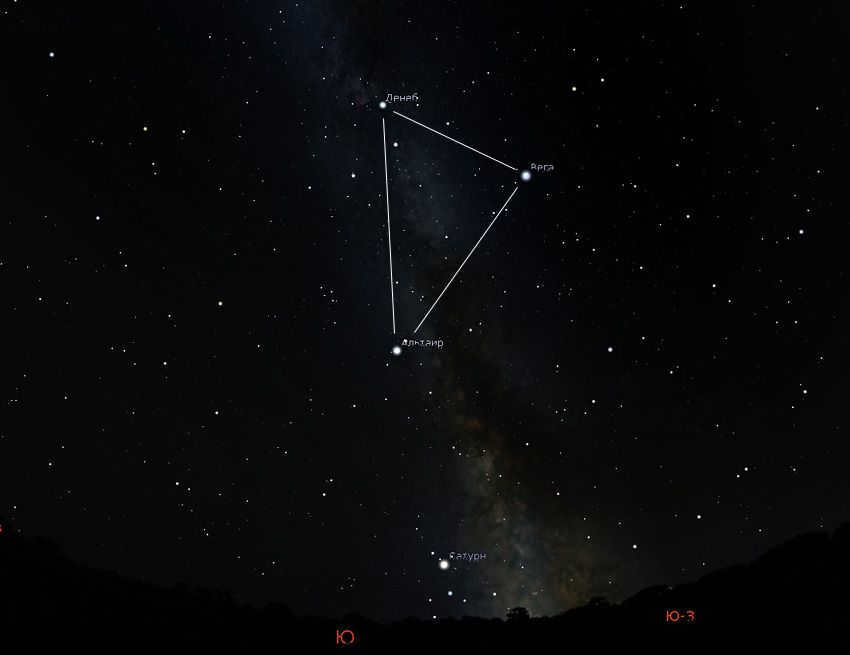

The stunning beauty of the Milky Way can be witnessed in the constellation of Cygnus, where it splits into two mesmerizing streams that gracefully descend towards the horizon. The darkness between these streams acts as a canvas, absorbing the radiance of distant stars and nebulae.
Another truly awe-inspiring spectacle of the Milky Way can be observed in the constellation of Aquila, where a dense and brilliantly luminous stellar cloud resides. Additionally, the constellations of Sagittarius and Scorpius showcase the grandeur of the Milky Way, although unfortunately, they appear quite low in the Russian sky. Only in the Caucasus region can these celestial wonders be truly appreciated.
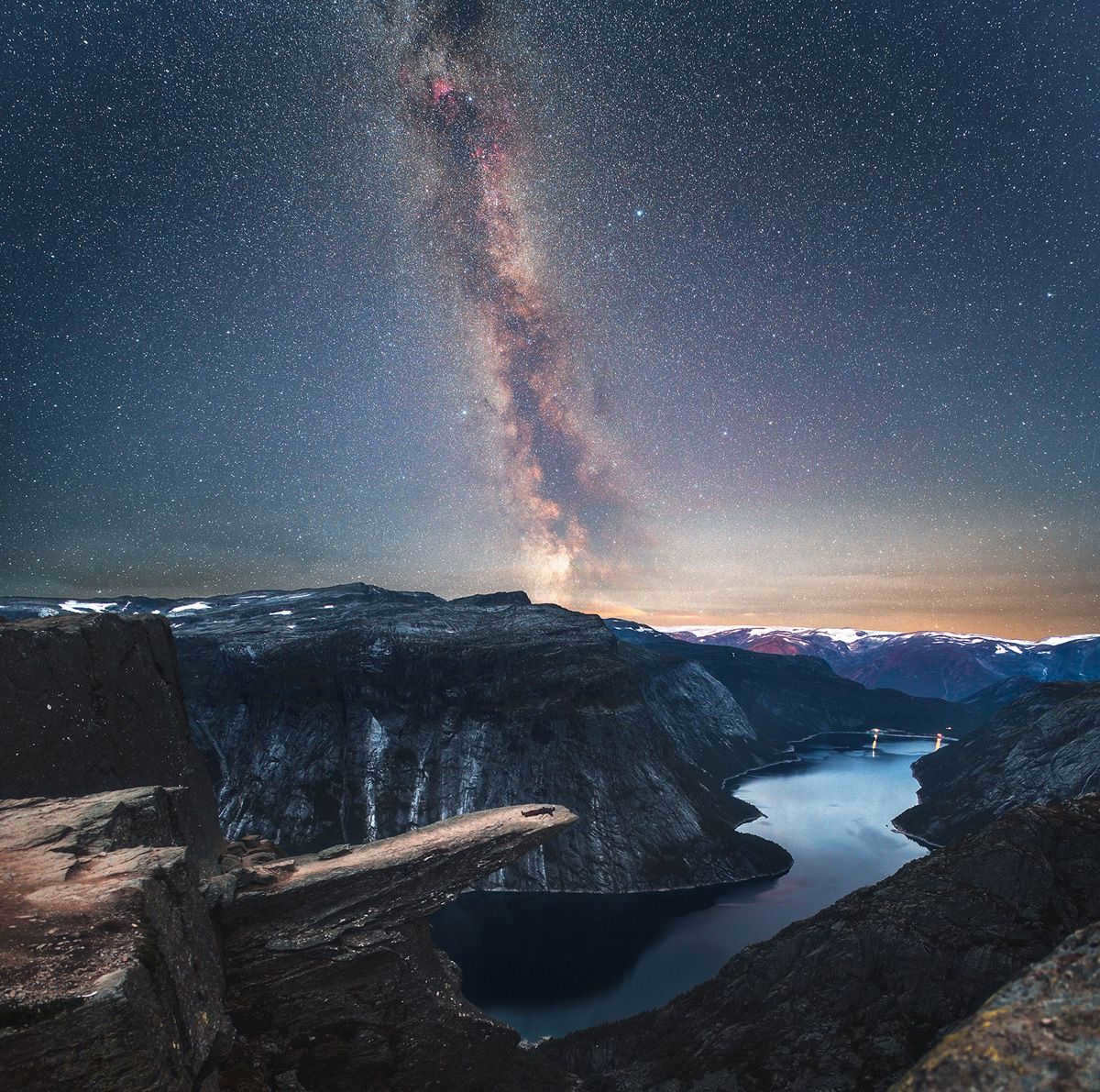
The view of the Milky Way in the direction of the Summer Triangle and the constellations of Shield and Sagittarius is truly breathtaking. Its intricate and ethereal structure, with its bright stellar clouds intermingled with reddish hydrogen nebulae and dark cosmic dust, is simply mesmerizing. Photo: Ruslan Merzlyakov/APOD
When observed through small binoculars, the complexity of the Milky Way becomes even more apparent. The wide field of view provided by binoculars allows for the observation of long and expansive nebular structures, chains of stars, and clusters of stars dotted with dark patches.
Undoubtedly, the Milky Way is one of the most awe-inspiring sights visible to the naked eye. While it may require some preparation to fully appreciate, the effort is well worth it. The treasures of the starry sky are not accessible to everyone, but those who take the time to observe will not be disappointed.
PS. During the dark nights of August or September, it is possible to observe not only the Milky Way but also a few other dim nebulous formations with the naked eye. One noteworthy example is the renowned Andromeda Nebula, which happens to be the nearest large spiral galaxy in proximity to our own. To learn more about this fascinating phenomenon, click here.
The Andromeda Nebula, although appearing as a hazy cloud, is actually an enormous spiral galaxy and is a popular celestial object among astronomy enthusiasts. It is the most brilliant galaxy visible in Russia and neighboring countries, and can even be observed without the need of a telescope under optimal conditions. Situated at a distance of 2.5 million light-years from our location, the Andromeda Galaxy holds the distinction of being the farthest object in the Universe that can be seen with the naked eye. Let’s explore how one can observe the Andromeda Nebula without any optical aids.
What is the challenge?
I previously mentioned that the Andromeda galaxy is only visible to the naked eye under specific circumstances. Many beginner stargazers mistakenly believe that it should be easy to see, given its apparent magnitude of 3.44 m. They argue that the star Megretz, which is similarly bright and visible in urban skies, should make the Andromeda Nebula visible as well. However, this is not the case.
Factors affecting the observation of nebulae in the sky
Let’s start by examining the primary conditions that impact the detectability of faint celestial objects. Here they are:
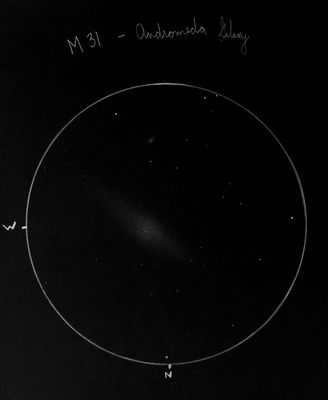
It is quite challenging to observe the Andromeda galaxy in the city, even with the help of binoculars. This information was sourced from Cloudy Nights.
- Light pollution in urban areas. The phenomenon of light pollution is widely known among city residents. When you step outside, you can only see the brightest stars in the sky, while all other celestial objects are obscured by the overwhelming light emitted by numerous street lamps, neon advertisements, store windows, and the headlights of countless cars. Due to the continuous presence of artificial lighting, the Milky Way has long vanished from the urban night sky.
- Air pollution. The quality of the air is not always pristine and transparent. Frequently, particles of dust can be seen suspended in the atmosphere, and there may be a slight haze or mist. Additionally, in many major cities, smog is a constant presence. This smog causes the street lights to disperse in such a way that even a clear sky can appear tinged with shades of red or coffee-and-milk, making it unsuitable for observation. Conversely, when the sky is completely clear, the level of illumination can be quite low.
- Clouds. I am not talking about the typical cumulus or layered clouds that can ruin any astronomer’s experience, but rather about thin, fluffy clouds that float at high altitudes, often completely invisible at night unless illuminated by the Moon. While these perispherical clouds can sometimes enhance the view when observing bright planets (by making the image sharper and more stable), they are a formidable enemy when it comes to observing nebulae.
- Moon. Starting from the first quarter phase and even earlier, the Moon’s light becomes a hindrance to observing faint nebular objects in the sky. Near the full moon, it becomes nearly impossible to make such observations.

Urban residents have lost touch with the experience of a truly dark and unobstructed sky. Source: 7ya.ru
Additionally, there is another crucial factor to consider: The elevation of the galaxy above the horizon. As we are aware, the Earth’s atmosphere has a significant ability to absorb light – just think about how the Sun appears during the summer at noon when it is high in the sky, compared to its appearance at sunset. It’s as if we are observing two different celestial bodies! When an object is positioned directly overhead, the atmosphere’s light absorption is minimal. Conversely, when the object is located near the horizon, the absorption is maximized. (This is due to the fact that the light from the celestial object at the horizon passes through a greater thickness of the atmosphere).
The conclusion drawn from all of the aforementioned points is straightforward: if you desire to observe the Andromeda Nebula with your naked eye, make an effort to follow the following steps.
- Look for a location that is away from streetlights where the sky is very dark, not whitish, and you can see stars up to 5 meters.
- Avoid observing when the moon is visible in the sky.
- Try to find the galaxy when it is at its highest point above the horizon.
Optimal time for observing the Andromeda Nebula
By the way, when is the best time to observe the Andromeda Nebula? It is during the night after midnight in August and September, late evening and night in October, evening in November and December, and early evening in January. During these times, the galaxy is located high above the southern side of the sky, at 75° above the horizon in Moscow and 85° in Sochi.
Assuming that you have fulfilled the basic requirements (which is actually not difficult to do – it may be even more challenging for someone who is reading this text!), what comes next? Proceed with the search for the galaxy in the sky!
To find the Andromeda Nebula that I have described in detail here, there are two methods. In brief: you can start by looking for the stars of the Pegasus square, or you can start from the stars of the constellation Cassiopeia, which is located above the galaxy. In both scenarios, you need to locate three stars of the Andromeda belt that are positioned above one another. At the base of the belt, you will find the bright (2 m ) star Mirach. Mirach (beta Andromeda), and above it, there are two stars of the 4th magnitude, mu and nu Andromeda. The galaxy is directly on the extension of the belt, just above and to the right of the star nu.
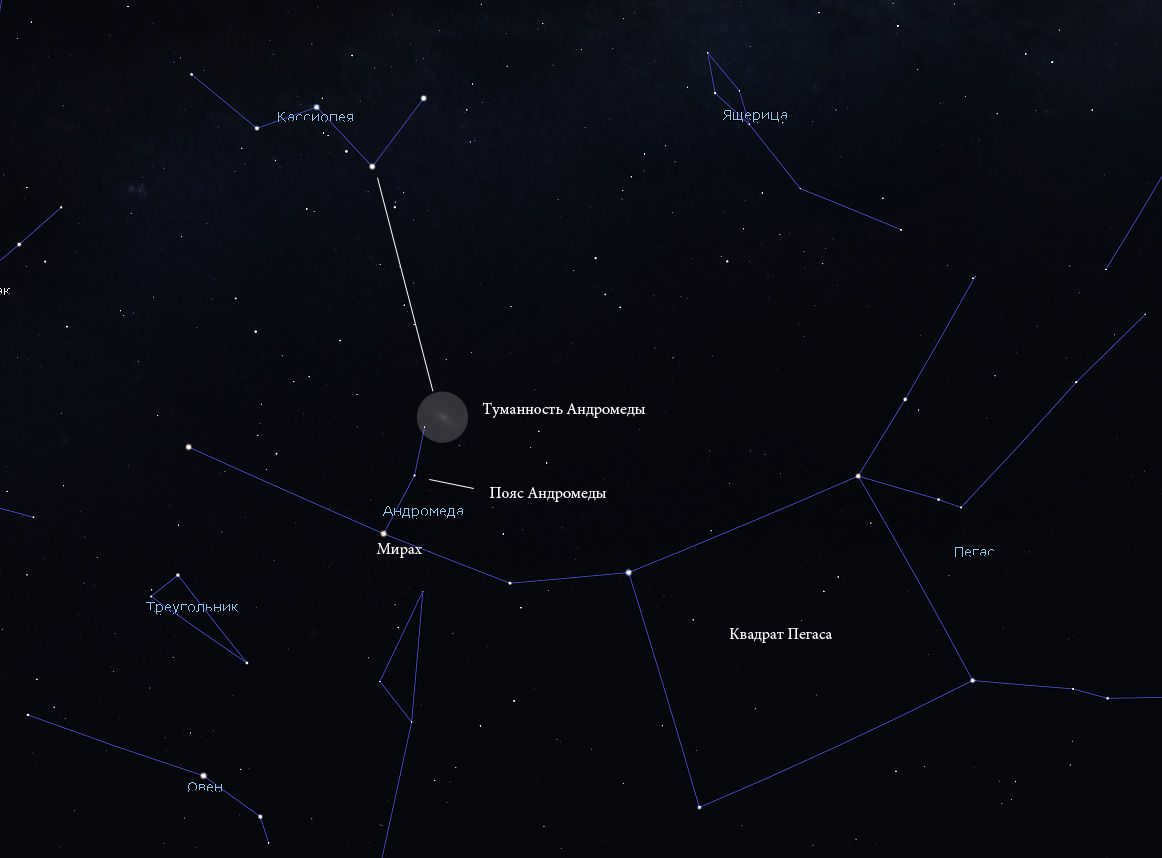
The Andromeda Galaxy is situated in the space between the star Mirach and the constellation Cassiopeia. Image: Stellarium
Remember to ensure your eyes are adjusted to the dark and utilize your peripheral vision
If you are having difficulty seeing, don’t worry. It could be due to poor visibility in the night sky or the presence of a bright moon. However, if the night is truly dark and you are still unable to see anything, it is likely that your eyes have not fully adapted to the darkness. Allow at least 10 minutes for your eyes to adjust to the surroundings. During this time, avoid looking at your phone and shield your eyes from streetlights and car headlights. You will be amazed at how effortless it becomes to locate the galaxy after following this process!
The Andromeda Nebula will be visible as a tiny point of light elongated along the primary chain of stars in the Andromeda constellation – hazy and lacking distinct boundaries. It truly resembles a “celestial cloud” and a “thin layer of mist”, as various writers have referred to it.
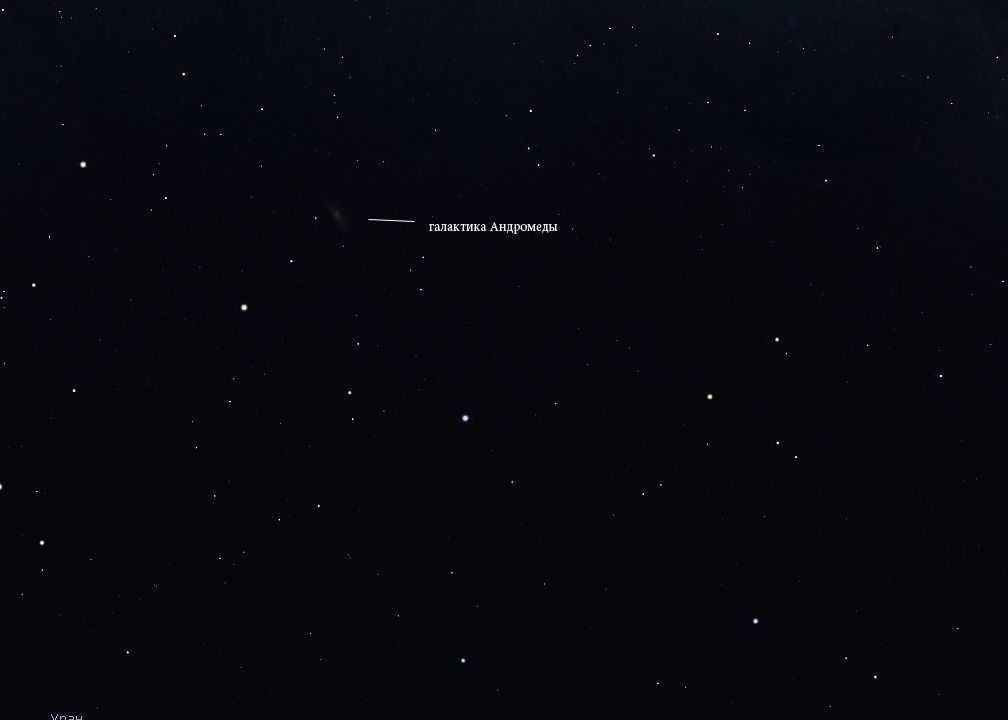
Observing the Andromeda Galaxy with the naked eye in a rural area would yield a similar view to the image above. Locating a cluster of mist amidst unconnected stars can be a challenging task, don’t you think? Image Source: Stellarium
However, there are likely many individuals who are curious about whether it is possible to observe the Andromeda Nebula without the aid of a telescope in an urban environment. And if it is indeed possible, how can one go about doing so? If the night sky is clear and not too heavily illuminated (such as in the outskirts of a city or in a dimly lit park), then it is definitely achievable! Even if it is not visible directly, it can still be perceived through peripheral vision. It is well known that the outer edges of our retinas are more sensitive to light than the central areas, although the image may not be as clear. This phenomenon allows us to detect relatively faint celestial objects in the urban sky, such as the Milky Way, the Perseus chi-ash cluster, and of course, the Andromeda Nebula!
To catch a glimpse of a galaxy using your peripheral vision, focus your gaze a few degrees away from the actual galaxy. If you want a better chance of spotting the Andromeda Nebula, try gently shaking your head from side to side – our brains are more responsive to moving objects.
Regrettably, many individuals have started to forget what the Milky Way looks like when gazing up at the night sky. We reside in urban areas where the night sky is nearly completely obstructed by advertisements, street lamps, and car headlights.
One can only truly appreciate the beauty of the Milky Way when embarking on a vacation or weekend getaway to the countryside. However, even in rural areas, it can often be challenging to see the Milky Way due to the presence of street lighting in residential areas.
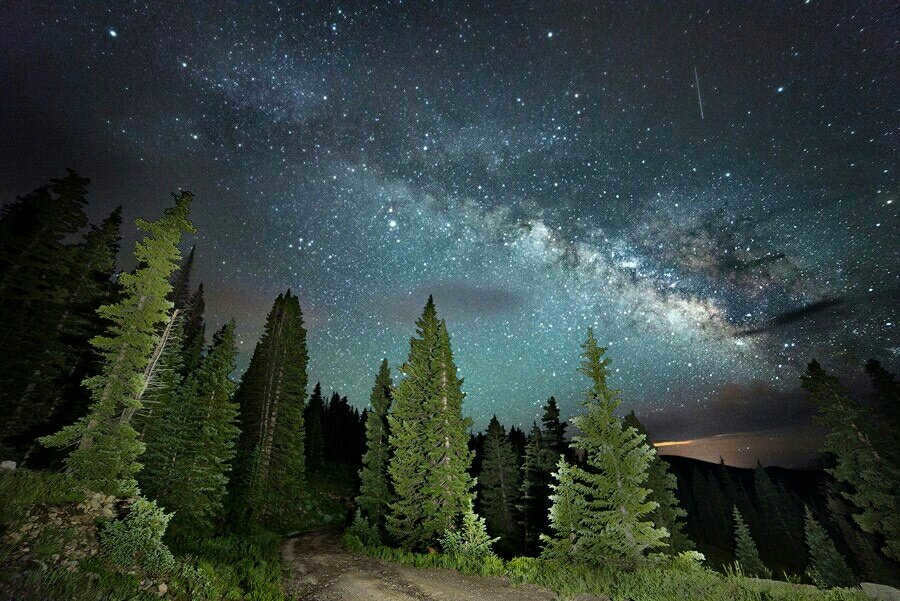
Regrettably, Russia’s territory is generally regarded as not the most ideal location for observing the Milky Way. Nevertheless, even in our nation, the celestial pathway can be marvelously observed. However, in order to delight in our indigenous galaxy, it is imperative to select not only the appropriate location, but also the optimal time. When does the Milky Way become visible and at what time is it most advantageous to observe?
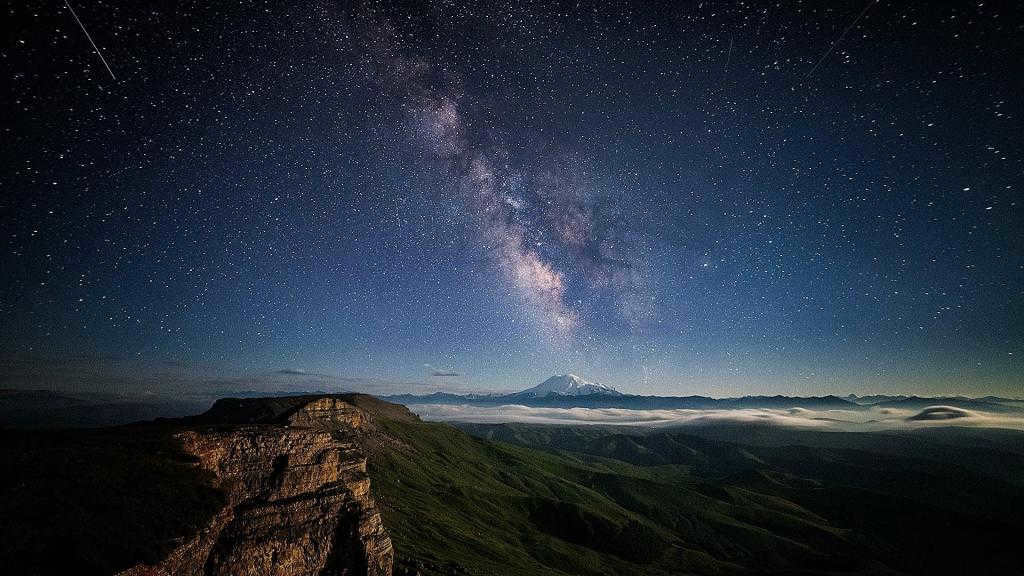
When the Milky Way becomes elusive
Regrettably, there are occasions when the Milky Way is not easily observable in the nocturnal expanse. The most challenging period to catch sight of the Milky Way is during the month of April. During this time, the opposite side of our planet faces away from the Milky Way, causing it to be less visible. In April, the star trail appears as a feeble curve emerging from beyond the horizon in the northern portion of the night sky. The spring sky is characterized by its intense darkness and a scarcity of stars, which makes spotting the Milky Way particularly arduous.
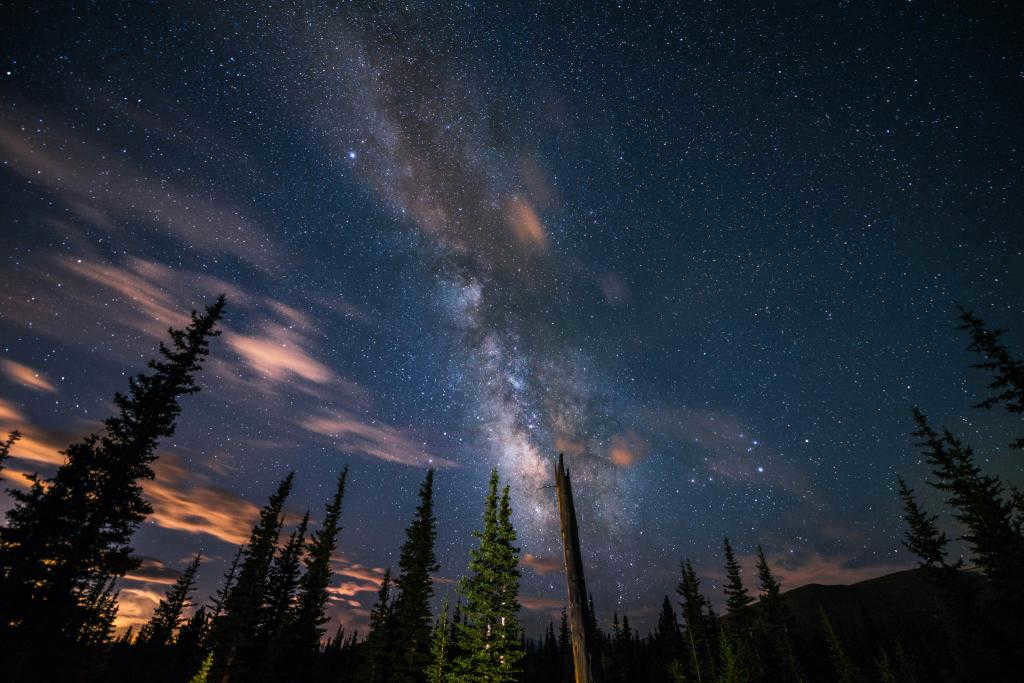
The optimal time for viewing
According to popular belief, the optimal time to witness the majestic beauty of the Milky Way in Russia is during the months of August and September. During this timeframe, the most vibrant sections of the stellar pathway, pointing towards constellations like Sagittarius, Shield, and Swan, are easily discernible. The first half of summer also offers a relatively good opportunity to observe the Milky Way. However, the drawback is that the nights during this period are short and relatively bright within our country’s borders.
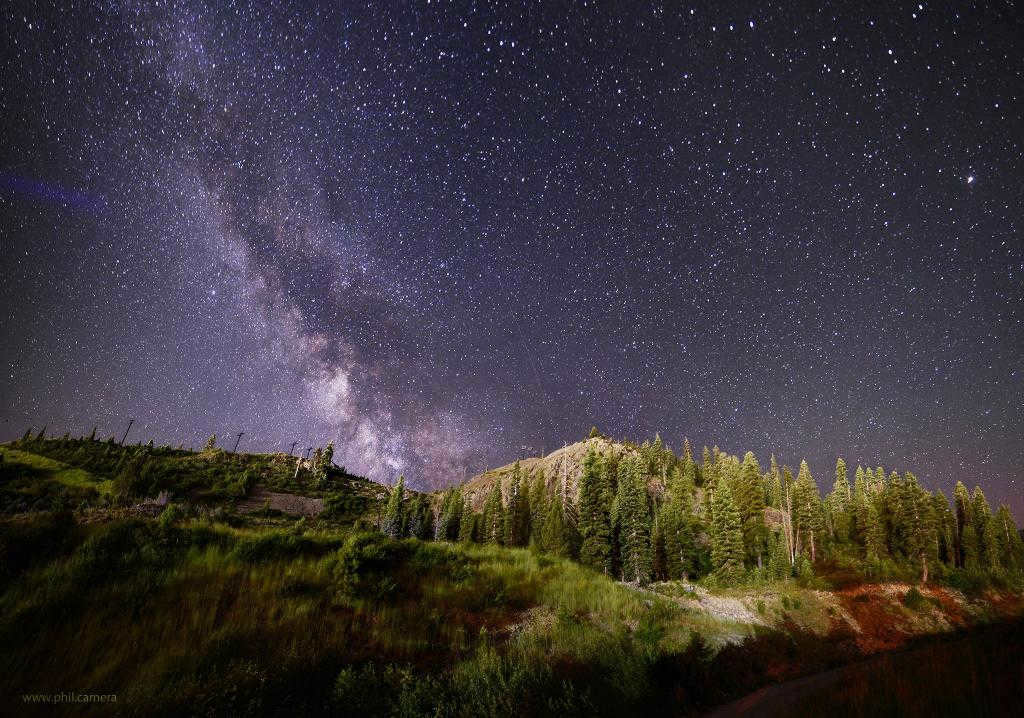
Can the Milky Way be observed during the winter?
During the winter season, it is possible to observe the Milky Way in the night sky. However, during this time, only the outer regions of our galaxy are visible from Earth. The outer regions of the Milky Way appear quite dim and lack a distinct shape. As a result, it is not easily visible in the sky and appears blurry. Additionally, winter skies are often covered with clouds, further hindering visibility.
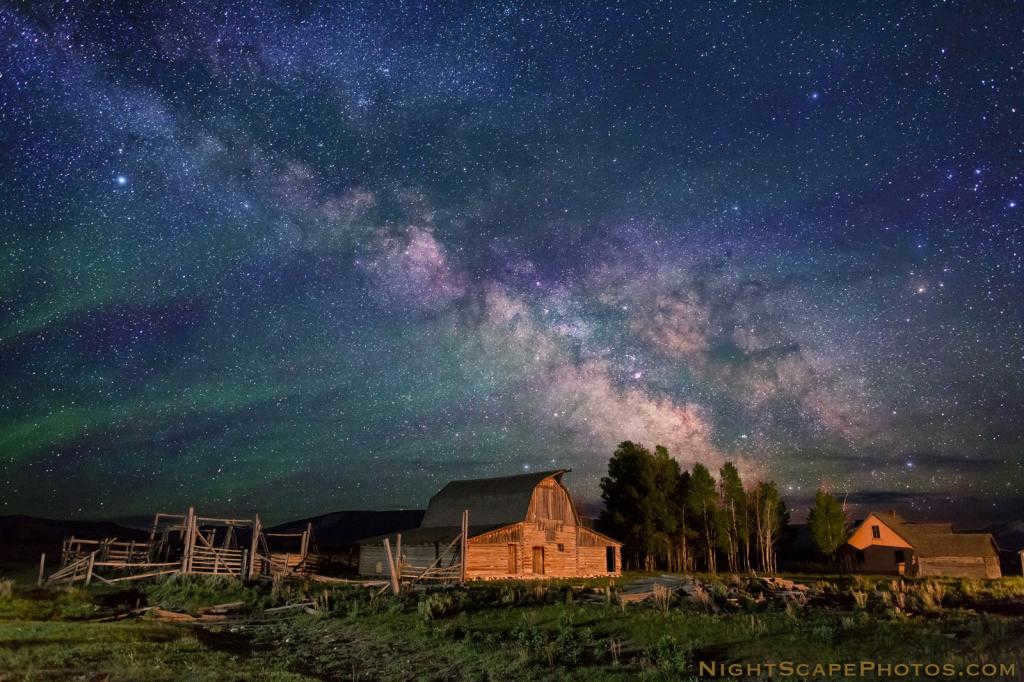
Which part of Russia offers the most ideal conditions for observing the Milky Way?
If you want to have a clear view of the Milky Way, it is advisable to move away from small towns by at least 20 km, and from big cities by 50-100 km. Residents from all regions of Russia can enjoy observing the Milky Way, but it is particularly visible in the southern latitudes. The best places to see the Milky Way in our country are in the Krasnodar and Stavropol Territory, as well as in Altai, and other similar locations.
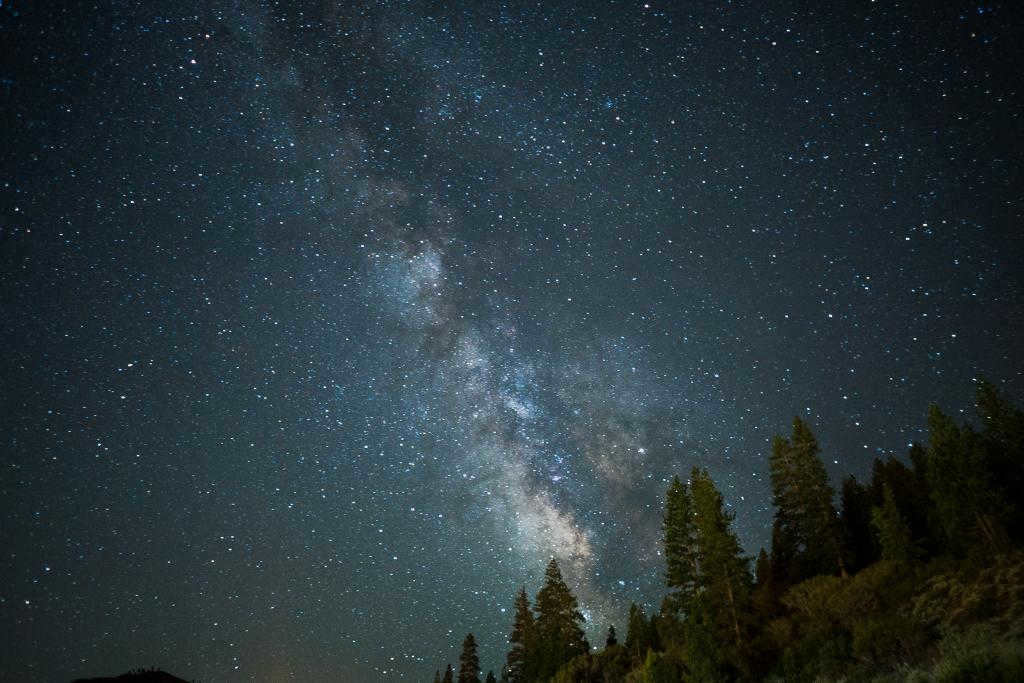
Factors that can impact visibility
In addition to the presence of streetlights, the visibility of the Milky Way can also be affected by the illumination from the Moon. The optimal conditions for observing the starry pathway is during the new moon phase. The same principle applies to the quarter moons. While the Milky Way can still be seen during a full moon, it may not appear as spectacular. For the best viewing experience of the Milky Way, it is recommended to wait at least two hours after sunset when the sky has become sufficiently dark. It is also advised to observe the starry pathway at least two hours before sunrise.

To observe the Milky Way, it is necessary to have a clear sky. To adapt your eyes to the darkness, you should wait for at least 20 minutes after going outside.
Where to observe the Milky Way
In the evenings of August and September, the Milky Way can be seen in the southern part of the sky, and at night it is visible in the southwest. To locate it, you can use the Great Summer Triangle as a guide. This constellation is made up of three bright stars – Altair, Deneb, and Vega. The Milky Way follows the line connecting Deneb and Altair. Near Deneb, the path splits into two, extending towards the horizon.
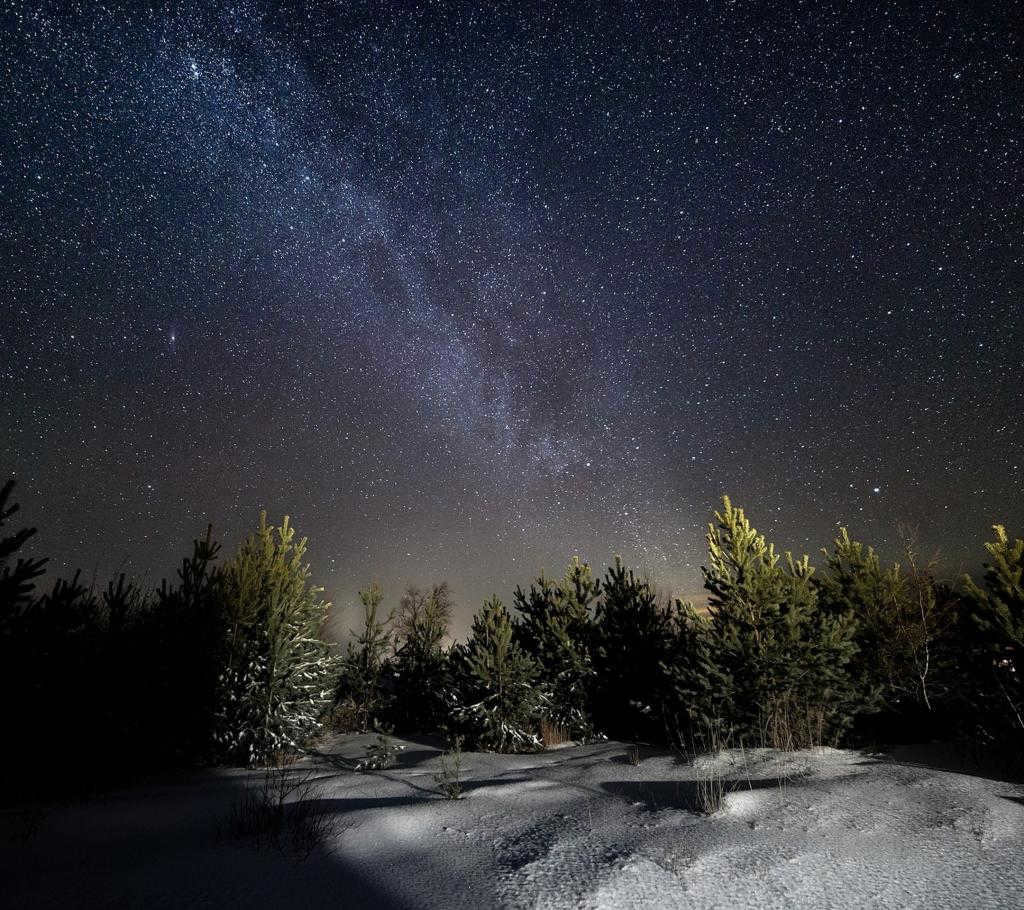
Appearance
The appearance of the Milky Way resembles white, softly shimmering clouds. These clouds consist of a vast multitude of closely packed stars. The Milky Way exhibits exceptional beauty when observed with binoculars.

The name of our galaxy, the Milky Way, originated from an ancient legend. The legend tells the story of Hera, who fed Heracles with her own milk. It is believed that the starry path we see in the night sky is a representation of Hera’s milk, hence the name Milky Way.

The ancient people of Babylon associated the cluster of bright spots in the night sky with their revered deity, Tiamat. They believed that it was the tail of their goddess. The ancient Greek communities, on the other hand, believed that this glowing streak was the source of Hercules’ divine power. It was not until the 10th year of the 17th century that Galileo finally provided an answer to this intriguing question. He discovered the best location to observe the Milky Way through a telescope. Upon examining it, the philosopher came to a definitive conclusion: it is comprised entirely of stars, just stars.

Scientists have determined that the Milky Way, our home galaxy, is a spiral galaxy with a unique feature. The Milky Way is composed of various celestial bodies, including:
- Earth
- the solar system
- between 200 and 400 billion stars that can be seen with the naked eye
The Milky Way has a diameter of approximately 100,000 light-years and an average thickness of 1,000 light-years. It is shaped like a flat disk and consists of:
- A disk that rotates faster than the surrounding halo and contains most of the stars in the galaxy
- A nucleus located in the constellation Sagittarius, which houses a massive black hole
- Spiral arms, including the Orion arm where our solar system is located
- A halo of dark matter that extends beyond the main body of the galaxy
- There is speculation that the Magellanic clouds (small and large) will be engulfed by the Milky Way in approximately 250 million years, and in another billion years, the Andromeda Galaxy will consume our mighty Milky Way. This celestial phenomenon will result in the ultimate demise of our Galaxy. However, it is important to note that this is merely speculative.
According to some theories, the Magellanic clouds (small and large) are destined to be devoured by the Milky Way in around 250 million years. Furthermore, it is believed that the Andromeda Galaxy will ultimately consume our own Milky Way in another billion years. This cataclysmic event will lead to the complete annihilation of our Galaxy. However, it is worth mentioning that these predictions are purely speculative.
Ways to avoid losing the cosmic path.
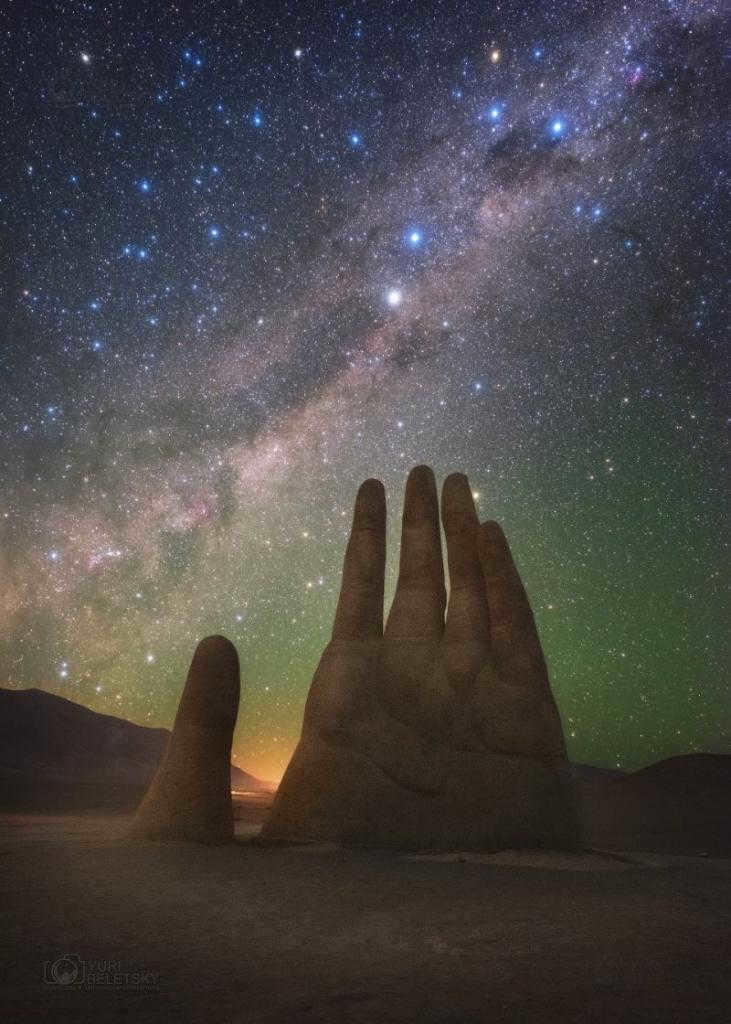
Essential equipment for night photography
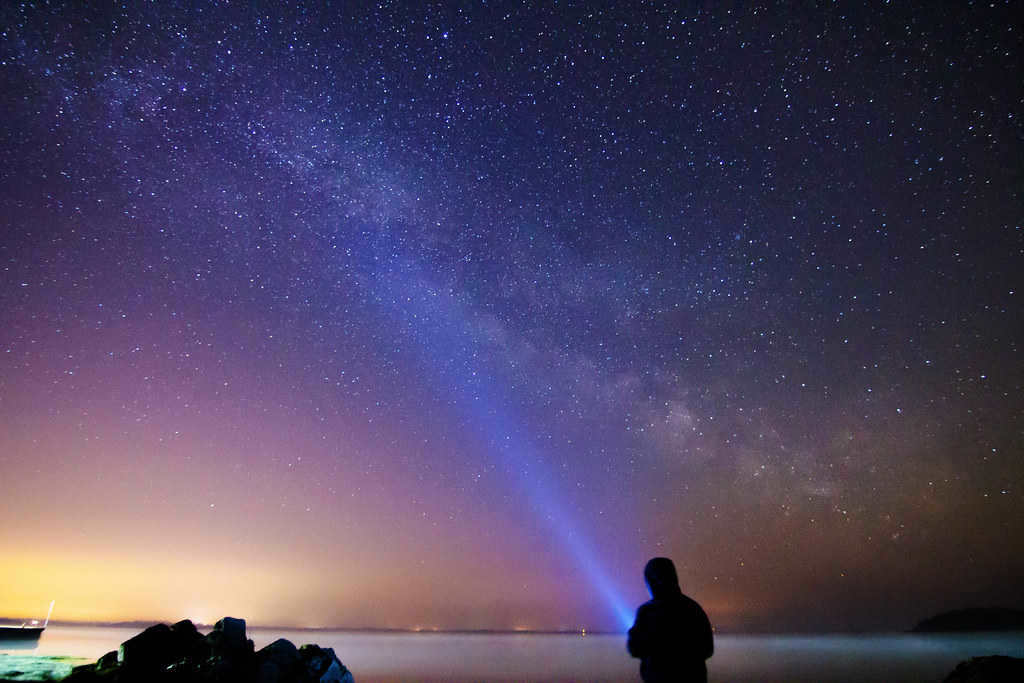
The most fascinating destinations in Russia
The boundless enigma of the celestial bodies beckons to unravel the inquiries that arise on Earth among humans. Hasn’t each of us, at least once, pondered why we exist here and not on another distant star? Who are we and what is our purpose? Perhaps, astrotourism will lend a helping hand to those embarking on an eternal quest for answers. Nowadays, this phenomenon is assuming a more diverse and enlightening form than it may initially appear. The best conditions for stargazing are found in mountainous regions. In Russia, the top three regions for observing the Milky Way are Altai, Crimea, and the Caucasus. Siberia is quite popular, boasting numerous locations that are far removed from bustling civilization and artificial lights. Opting for an unpopular hiking trail and embarking solely on foot is the optimal and simplest choice. However, this doesn’t imply that in other, semi-inhabited locales, stargazing isn’t possible. The only potential hindrance is the presence of excessive ambient light.
Nowadays, experts claim that artificial light has caused a significant distortion in our perception of the natural world. The excessive brightness of the sky has made it nearly impossible to find a spot where one can admire the beauty of the Milky Way. It is disheartening to think of all the wonders that may have been lost to humanity. However, there are individuals who are actively seeking out these hidden treasures, embarking on what can only be described as “astroroutes.” Their mission is not only to rediscover these celestial marvels but also to ensure that they are preserved for generations to come.
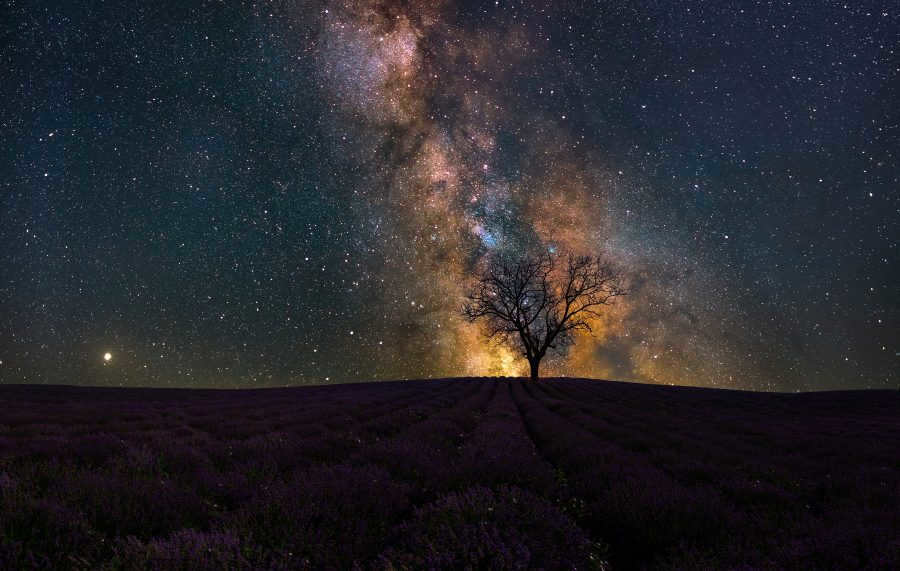
- The solar system
Our galaxy was given the name Milky Way because ancient people compared the twinkling of billions of stars in the night sky to a splash of milk. The Milky Way forms a wide ring across the sky. The Chinese recognized it as a mysterious phenomenon as early as the 6th century BC. They referred to the galaxy as the Milky Way, the Silver River, the Celestial River, and so on.
Regrettably, a majority of us have regrettably forgotten what the appearance of the Milky Way is like! We reside in urban areas where the nighttime sky is unfortunately concealed by the radiance of street lamps, illuminated advertisements, and automobile headlights. Furthermore, in large cities, there is often a presence of smog in the atmosphere, which effectively reflects the luminosity from the street lamps. As a consequence, the nocturnal sky over the city is not characterized by darkness and transparency, but rather by a cloudy and luminous appearance, similar in color to coffee mixed with milk. It is not surprising that numerous individuals have never had the opportunity to witness the spectacle of the Milky Way in their lifetimes! This leads us to question: is it even feasible to catch a glimpse of it? Or more accurately, how does one go about observing the Milky Way in the expanse of the sky?
The straightforward response is: seek out the obscure sky! Another factor is that nowadays, it is not as simple to accomplish as it was two or three decades ago. There are progressively fewer locations on our planet where electric lighting has not yet invaded. And it is precisely this kind of dark and clear sky that is required to fully appreciate the spectacle of the Milky Way. Where can it be found? Before delving into this inquiry, let’s examine the optimum time to observe the Milky Way.
What is the significance of the Milky Way galaxy?
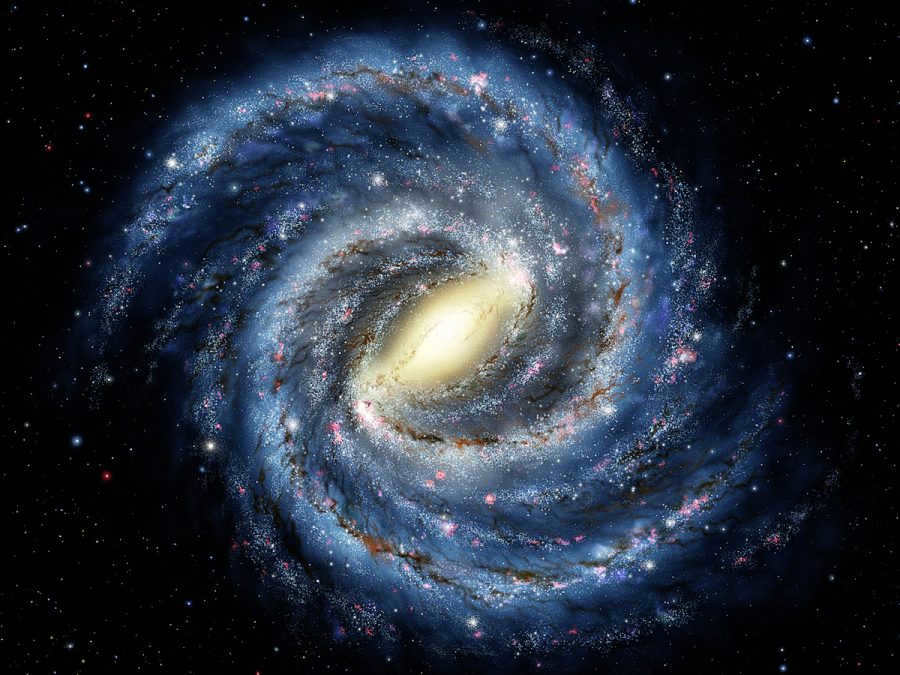
The way our galaxy appears and its true nature
During a cloudless night with no moon in sight, a pale, softly glowing band known as the Milky Way stretches across the sky, encircling the entire celestial dome. When observed with a telescope, it becomes apparent that it consists of a vast collection of dim stars.
Given that the Milky Way encompasses the entire sky, essentially dividing it in half, it is evident that our solar system is located close to this plane, commonly referred to as the galactic plane.
As we move further away from the plane of the Milky Way, the number of faint stars decreases and the stellar system’s extension in those directions becomes less. In general, our star system, known as the Galaxy, occupies a space that resembles a lens when viewed from the side. It is flattened, with the thickest part in the middle and the thinnest part at the edges. If we were able to see it from above or below, it would appear as a circle rather than a ring. When viewed from the side, it would resemble a spindle. However, what are the exact dimensions of this spindle? And is the distribution of stars within it uniform?
The direction of the constellation Sagittarius hosts the most powerful clusters of stars, which also happens to be where the core of the galaxy lies, resulting in the brightest region of the Milky Way. It is reasonable to infer that our solar system is located away from the center of the Milky Way Galaxy, closer to its edge, as we observe the constellation Sagittarius “from the side”.
Considering that the Milky Way Galaxy has a cross-section of nearly 100 thousand light years, our solar system is situated approximately 25 thousand light years away from its center, equivalent to about half of its radius.
The solar system is located approximately 25,000 light years away from us in the direction of the constellation Sagittarius, near the center of the Galaxy. It orbits at a speed of 250 km/sec. Although the exact shape of its orbit is not known, it is believed to be close to a circle. If this is the case, the Sun completes one revolution on its orbit in approximately 200 million years. This time period can be considered a “space year” for measuring extremely large intervals of time.
In comparison, the entire history of mankind is incredibly short when compared to this vast period of time. If we were able to observe the Sun as it rushes and winds along its orbit, similar to how we see a train winding around a curve on a track, it would be impossible to keep track of the planets’ revolutions around the Sun. They would appear to be spinning at a speed faster than an electric fan.
Not all stars move in the same manner when they rotate around the center of the Galaxy. For instance, the short-period Cepheids fall behind the Sun by 100 kilometers for every second.
Our solar system is moving at a speed of 20 km/s towards the constellation Lyra, which is our “neighbor”. This motion occurs within our star cloud or local system. Despite this, we are still able to orbit around the galactic center.
Imagine how bright the center of our Galaxy, the Milky Way’s cluster of stars in the Sagittarius constellation, would appear if it weren’t for the absorption of light by the cosmic dust that fills the space between us and the center. The dust dims and obscures the brightness of the center.
The estimated mass of our Galaxy is around two hundred billion solar masses, with about one thousandth of it consisting of interstellar gas and dust. Similarly, the mass of the Andromeda galaxy is also approximately the same, while the Triangle galaxy has an estimated mass that is twenty times smaller.
When observing the Milky Way and other galaxies from an external perspective, it may appear that the stars are densely packed and almost touching each other. However, this is not the reality.
If we were to create a model of the Milky Way where the stars were represented as raindrops, the distance between each raindrop would need to be around 65 kilometers in order to accurately depict the distribution of stars within a typical galaxy!
Ironically, studying the structure of the Milky Way Galaxy poses a significant challenge for us. Our unique perspective of being inside the galaxy makes it difficult to observe its overall structure. It’s comparable to trying to visualize the exterior of your own house while being inside your apartment and looking out the window.
However, by examining other galaxies that we can see from our window, we can infer the possible appearance of our own galaxy. In this analogy, these other galaxies serve as other houses, providing us with clues about the structure and composition of our own galactic home.
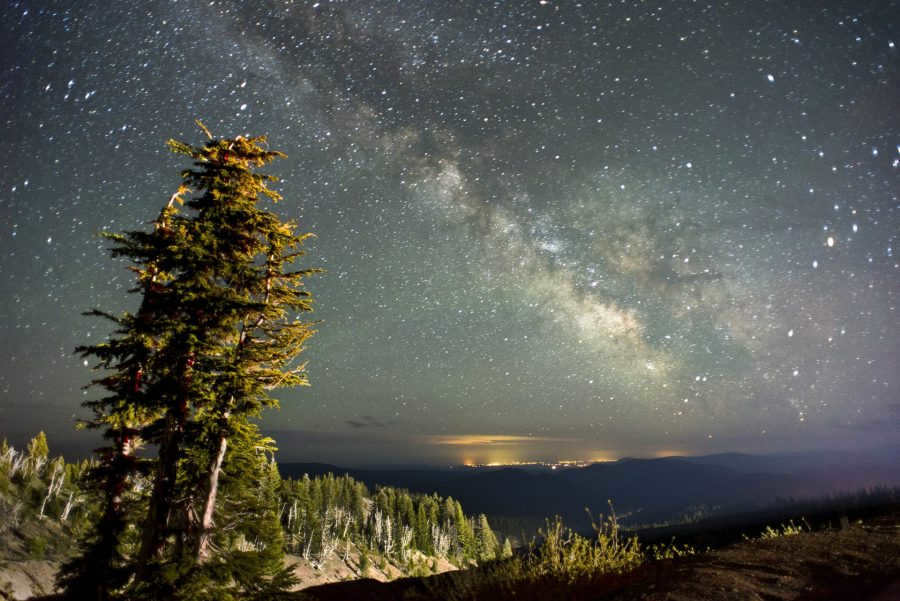
Choosing the perfect timing
1. Observe the Milky Way in the sky during the period from June to August. In the summer months in the Northern Hemisphere and winter months in the Southern Hemisphere, the Milky Way can be best observed as it is not in close proximity to the Sun during this time.
- While certain parts of the Milky Way may be visible as early as March, and some parts only become visible from August onwards, it is not visible between November and February.
2. Begin stargazing two hours after sunset or two hours before sunrise. Right after sunset or before sunrise, the sky is still illuminated. Wait for approximately two hours after sunset.
- To determine the exact time of sunset and sunrise on any specific day, you can refer to a guidebook or check a weather website. Make sure to incorporate this information into your plans.
3. Locate an area with minimal light pollution. Light coming from buildings, streets, and vehicles can obstruct your view of the stars. Try to find a spot in the countryside that is far away from cities, residential areas, and major roads.
- If you want to see the Milky Way, head south of any major city. This way, the city lights won’t interfere with your view of the Milky Way.
- Nature reserves, mountains, deserts, and any areas with low population density are ideal for observing the Milky Way.
- You can utilize light pollution maps to locate dark areas.
4. Select a night without a full moon and clear skies. If the moon is too bright or if there are clouds in the sky, it will be difficult to see the Milky Way. Choose a clear night during a new moon or the first few days of the lunar month for optimal observation.
- Many weather services provide information on the altitude of clouds and the current phase of the moon.
- Apps like Luna Solaria or Moon Phase Plus offer details on the current lunar phase.
5. Allow your eyes approximately 20 minutes to adapt. During this time, avoid using a flashlight, phone, or any other source of light. Before you can observe the stars, give your eyes an opportunity to acclimate to the darkness.
Observing the Skies from Above the Equator
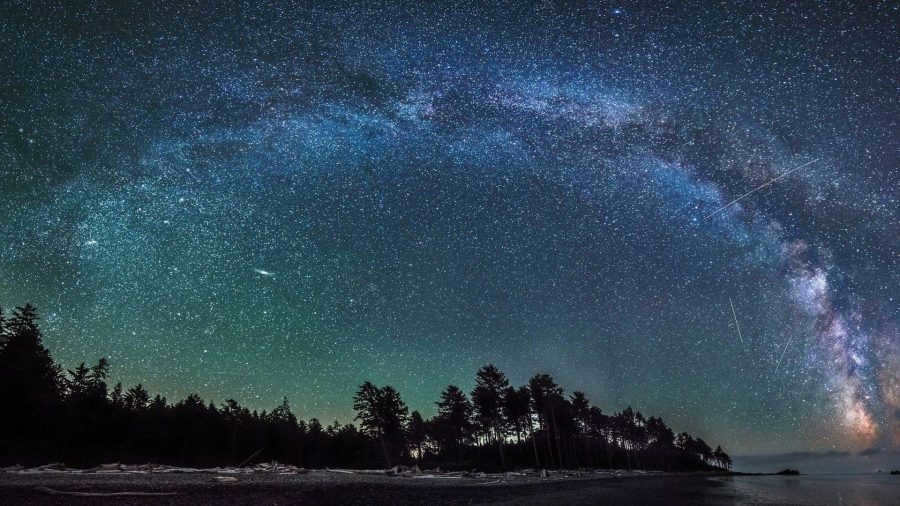
1. Avoid venturing too far north. Observing the Milky Way becomes increasingly challenging beyond the latitude of 50°N. This region encompasses areas such as Normandy, France; Vancouver, Canada; and Inner Mongolia, China. For the best viewing experience, it is advisable to head southward.
2. Orient yourself towards the south. Utilize a compass or a smartphone application capable of indicating the southern direction. During the summer, the initial bands of the Milky Way will emerge from the southern part of the sky. They will appear as either a cluster of stars or a dense, hazy cloud.
- If viewing the Milky Way in the spring, slightly turn to face west. If in the fall, slightly turn to the east.
- Keep in mind that the actual appearance of the Milky Way may differ from what you have seen in photographs. Cameras possess the ability to capture more light and colors than the human eye.
3. To observe the center of the galaxy, direct your attention towards a point near the horizon. Locate the most concentrated cluster of stars – this is the nucleus, which serves as the central point of the galaxy. Depending on your location, the nucleus may be partially obscured by the horizon if you are situated far north. However, if you find yourself closer to the equator, it is possible for the nucleus to be visible above the horizon.
4. Identify the Great Divide by searching for areas of darkness within the Milky Way. Within the core of the Milky Way, you can observe various dark patches. These areas are only visible during the darkest periods. Referred to as the Great Divide, they consist of dense clouds that partially cover sections of the Milky Way.
Observation from the Southern Hemisphere
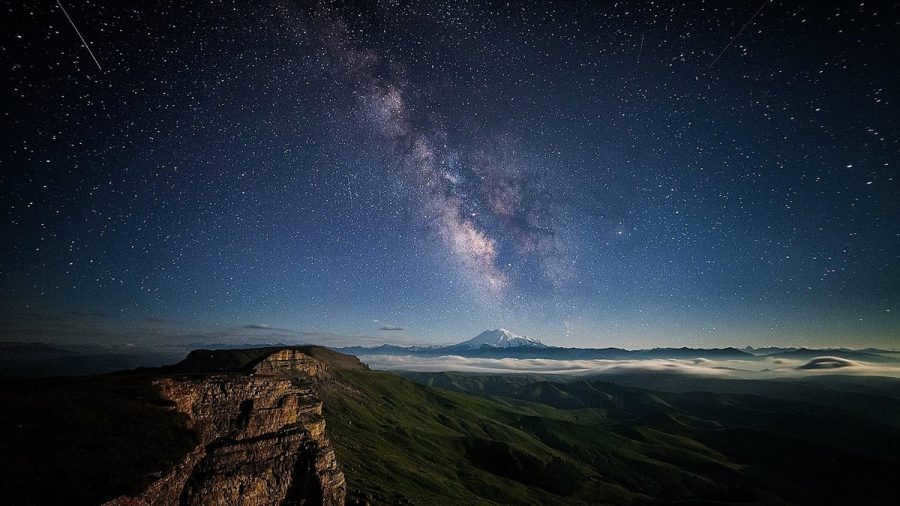
1. Explore locations around 30°S latitude. The Southern Hemisphere offers optimal views of the Milky Way, particularly in regions such as the Northern Cape Province in South Africa, the Coquimbo region in Chile, and New South Wales in Australia.
- While the Milky Way can be observed from other points in the Southern Hemisphere, the southern locations provide the most exceptional vantage points.
2. Observe the Milky Way’s band by gazing towards the southwest. The Milky Way’s band begins in the southwestern part of the sky and extends across the horizon towards the northeast. Utilizing a compass can assist in locating the southwest horizon.
4. Seek out areas of darkness to observe the Great Divide. The Great Divide is particularly noticeable in the Southern Hemisphere due to the increased brightness of the Milky Way. You will be able to perceive the divide as dark streaks that traverse the starry regions.
Additional entertainment for pondering
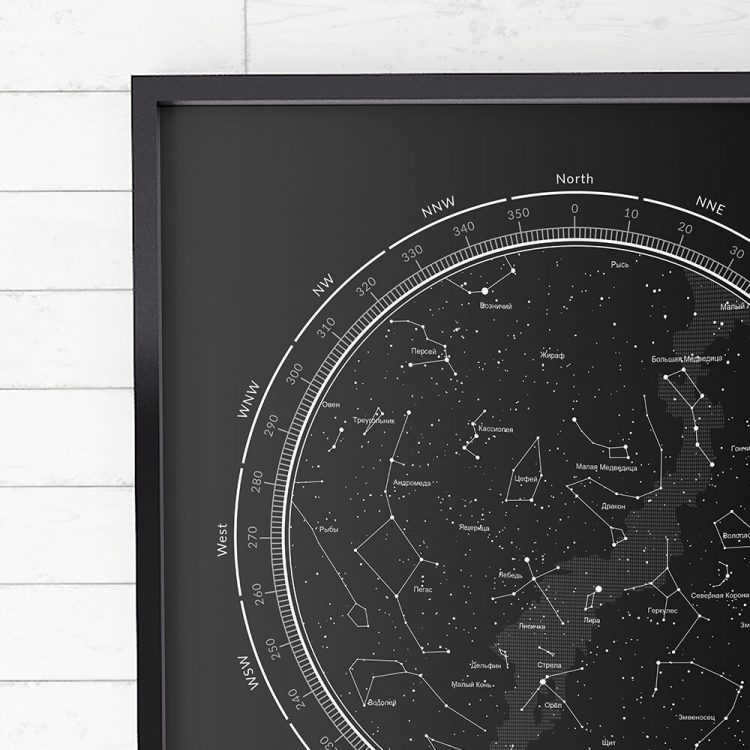
1. Utilize a star map to identify constellations. Depending on your geographical location (latitude) and the current time of year, you will have the opportunity to observe specific constellations. A star map can provide information on what constellations are visible. It is advisable to select a star map that corresponds to your particular region and the present time of year.
- Some notable constellations that can be spotted near the Milky Way include Sagittarius, Alpha Centauri, the Swan constellation, and the Magellanic Clouds.
- A star chart can be obtained from planetariums, science museums, bookstores, or online retailers.
- Alternatively, you can download apps on your smartphone, such as Stellarium or SkyGuide, which will automatically provide you with a star map.
2. To get a closer look, utilize either binoculars or a telescope. Locate the Milky Way using your naked eyes, direct the lenses of the instrument towards that direction, and examine individual stars and galaxies up close through the telescope.
- Any binoculars or telescope, regardless of its magnification, will suffice. With higher magnification or aperture, you will be able to discern more intricate details, while at lower magnification, you may observe individual stars.
3. Capture images using a digital camera with slow shutter speeds. Photography can immortalize the breathtaking colors of the galaxy and the stars within it. Configure your camera for a prolonged exposure to obtain a stellar photograph. Attach the widest lens you possess. For optimal results, utilize a tripod. Position the lens in a way that captures as much of the sky as possible.

